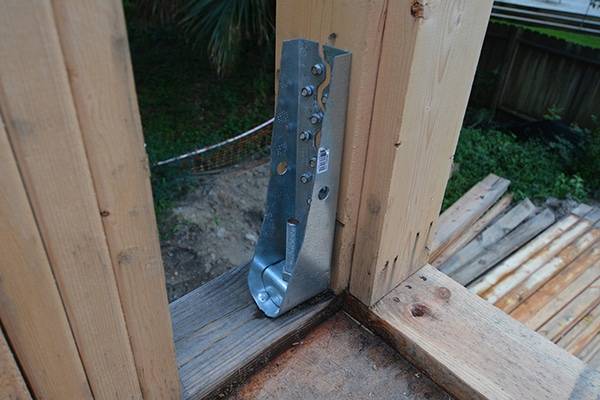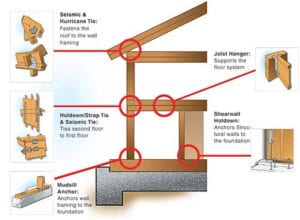
Residential Construction and Wind Loads
Building on the coast in high wind zones requires adhering to a more robust set of building codes. The standards have changed dramatically over the past twenty years. Important testing and guidance comes from a variety of government agencies including the Department of Energy, FEMA and even the Department of Defense. Additional public and private research is conducted at wind load testing facilities such as the one located at Clemson University and privately funded centers such at the IBHS Research Center in Chester, SC.
This research is used, along with their own engineering efforts, by companies such as Simpson Strong-Tie to create products and building systems to address natural events like hurricanes and tornadoes. Let’s take an introductory look at some of the ways these products help protect your home.
Building with Continuous Load Paths
If you live in a high wind zone you will need to meet a wind load resistance standard set by the federal government. This standard can be anywhere from 90 to 160+ MPH. Meeting this code requirement is the job of you or your builder’s engineer. They will start from the roof of your design connecting and tieing walls, floors all the way down to the foundation creating a “continuous load path.” .A continuous load path is solid chain that ties the house together from top to bottom.
A continuous load path is critical during an earthquake or hurricane because it helps hold the house together when ground forces or high winds try to pull your home apart. A home is more likely to withstand a seismic or high wind event and stay intact when all parts of the house — roof, walls, floors and foundation — are connected together.
Simpson Strong-Tie offer up a great article that goes into the concepts and elements of this chain here: 5 Steps to a Safer and More Storm-Resistant Home
Connector Strap and Tie Basics
Connectors are steel components designed to connect and strengthen joints within the frame of a home. They are engineered to secure the skeleton of the house and increase its ability to resist seismic, wind and other forces. Joints secured with connectors are much stronger than joints secured only with nails (toe-nailed joints).
Connectors come in all shapes and sizes. In fact there are thousands of connectors specially engineered for very specific applications. Here are the types most commonly found in residential construction.

Connectors are generally found in 5 areas of a structure:
Foundation anchors to Wall Framing
Foundation ties to Structural Walls
Hold-down/Strap ties first floor to Second Floor
Joist Hangers Support the Floor System
Ties fasten the Roof to the Wall Framing
There are three major types of connectors:
Wood to Concrete connectors typically affix the frame of a house to the foundation. Anchor bolts, hold-downs, and post bases are common wood-to-concrete connectors.
Wood to Wood connectors join two wood members in the frame. You will find wood-to-wood connectors, such as joist hangers and hurricane ties, used it the floor, wall, and roofs in better-built homes. Wood to Masonry connectors join wood to concrete block construction, which is common in some areas of the Southeast United States. There are also miscellaneous connectors in fences, decks, and other structures around the home.
As the homeowner you won’t need to have a working knowledge about how your home is constructed. You get to concentrate and more fun responsibilities such as choosing kitchen cabinets, light fixtures and color schemes. But it’s certainly important, and reassuring, to know that your builder and his/her engineer are constructing a home that will withstand the elements of your coastal environment.
Want to learn more about building in hurricane zones?
Here are several resources with in-depth information:
Whole Building Design Guide (a program of the National Institue of Building Sciences)
Simpson Strong-Tie: Safer and More Storm-Resistant Homes
IBHS Research Center[/fusion_text][/fusion_builder_column][/fusion_builder_row][/fusion_builder_container]